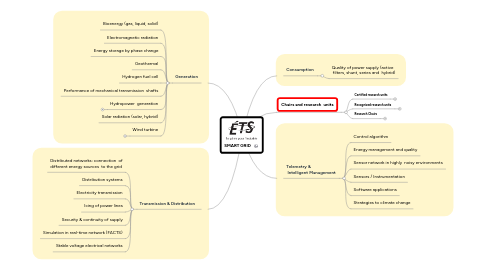SMART GRID
by SPSIR ETS


1. Consumption
1.1. Quality of power supply (active filters, shunt, series and hybrid)
2. Generation
2.1. Bioenergy (gas, liquid, solid)
2.2. Electromagnetic radiation
2.3. Energy storage by phase change
2.4. Geothermal
2.5. Hydrogen fuel cell
2.6. Performance of mechanical transmission shafts
2.7. Hydropower generation
2.7.1. Construction
2.7.2. Hydraulic turbines
2.7.3. Implantation (Hydrology, hydrogeology, geotechnical, seismic protection, etc.)
2.7.4. Turbines hydrauliques
2.8. Solar radiation (solar, hybrid)
2.9. Wind turbine
2.9.1. Aerodynamics
2.9.2. Power electronics (DFIG, PMSG and SCIG)
2.9.3. Composite structure
3. Chairs and research units
3.1. Certified research units
3.1.1. GREPCI – Power Electronics and Industrial Control Research Group
3.2. Recognized research units
3.2.1. NEAT – Research Laboratory on the Nordic Environment Aerodynamics of Wind Turbines
3.2.2. CTT – Thermal Technology Centre
3.3. Research Chairs
3.3.1. Canada Research Chair on Electrical Energy Conversion and Power Electronics
3.3.2. Industrial Research Chair in Technologies of Energy and Energy Efficiency – T3E
3.3.3. Hydro-Québec/TransÉnergie Chair on Simulation and Control of Electric Power System

